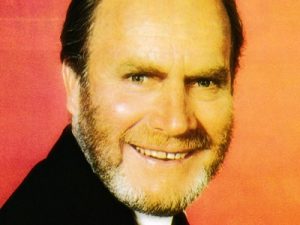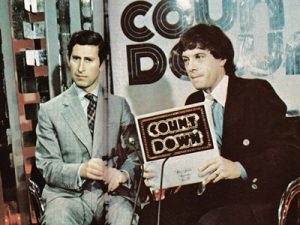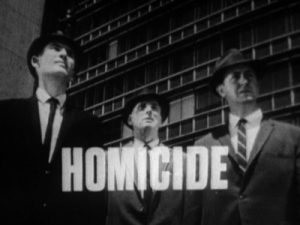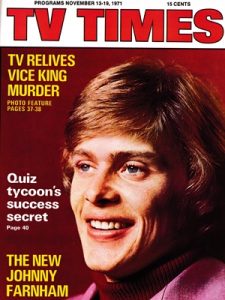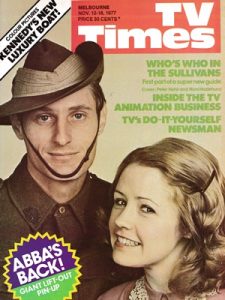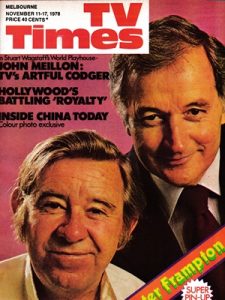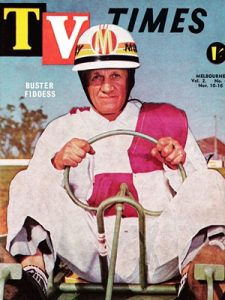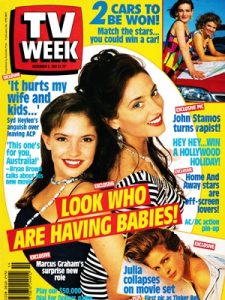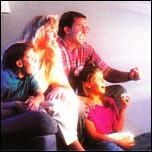 Australian television first entered the digital age on 1 January 2001 – a decade ago today.
Australian television first entered the digital age on 1 January 2001 – a decade ago today.
On that day all five networks – ABC, Seven, Nine, Ten, SBS – commenced full-time standard-definition digital transmission in Sydney, Melbourne, Brisbane, Adelaide and Perth as part of the initial roll-out of digital television. High-definition signals were not to launch until later in the year.
Regional areas and other cities were to gradually be covered by digital broadcasts as ABC, SBS and regional broadcasters upgraded their infrastructure to include digital in the years that followed. Indeed, even now, some regional and remote areas are still yet to receive commercial television channels, either the primary or multi-channels, in digital.
However, very few would have actually witnessed those first digital transmissions on 1 January 2001. With the government making last-minute changes to digital broadcasting standards as late as towards the end of 2000, very few manufacturers had been able to commit to producing compatible receiving equipment much before the launch date. Even after 1 January, major retailers may have had a handful of set top boxes (STB) on display but would be lucky to have had any to actually sell. Broadcasters themselves even had to scramble for the few tuners that were available. Colin Knowles, head of ABC’s digital roll-out, told The Sunday Age late in December 2000 that he had only been able to secure five units nationwide which would be used for signal testing. The commercial networks were forced to underwrite the initial roll-out of digital tuners, just to get them in the stores, but even then only a few thousand were expected to be in the marketplace nationwide by the end of February.
As well as the lack of supply, the cost of even the most basic set top box came with considerable cost as manufacturers sought to recoup their development costs for the new technology. A standard definition STB would have likely cost anything from $700 recommended retail – and a high-definition box would set you back over $1000. In both cases, the tuners only served to downgrade the digital signal to one that can be displayed through a traditional cathode ray tube (CRT) TV – so a high-definition tuner would not display high-definition when used on a CRT TV, it just meant that you could view high-definition channels.
 As for television sets with integrated digital tuners – ten years ago they were still yet to hit the market and before they arrived a standard-definition set was estimated to set you back around $5000 – even more if you wanted a high-definition set, estimated to cost anything around $8000. Prices for digital tuners would inevitably come down but it was not going to happen quickly, particularly given the high price tag for early adopters.
As for television sets with integrated digital tuners – ten years ago they were still yet to hit the market and before they arrived a standard-definition set was estimated to set you back around $5000 – even more if you wanted a high-definition set, estimated to cost anything around $8000. Prices for digital tuners would inevitably come down but it was not going to happen quickly, particularly given the high price tag for early adopters.
And in introducing digital television, the government had placed restrictions on offering more channels – even though the technology supported it – seemingly as a concession to the pay-TV lobby. Only ABC and SBS were initially allowed to set up multi-channels and even then they had rigid restrictions on what they could actually air on them. Basically, anything resembling entertainment was not allowed. News bulletins were only allowed if they were in foreign languages. Specific program genres like education, children’s and arts programs would be allowed. Not really the sort of programming to encourage people to run out and buy digital tuners en masse.
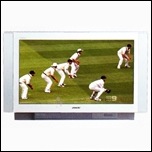 As well as offering widescreen, crystal clear pictures and improved sound quality, digital television also offered multi-view broadcasts on sporting events – a feature that has been used maybe once or twice as a pilot in the early years of digital television, but not since. Indeed, the networks were even lacking in providing widescreen broadcasts of some sporting events, a genre that seems a natural fit for widescreen transmission, in the earlier years.
As well as offering widescreen, crystal clear pictures and improved sound quality, digital television also offered multi-view broadcasts on sporting events – a feature that has been used maybe once or twice as a pilot in the early years of digital television, but not since. Indeed, the networks were even lacking in providing widescreen broadcasts of some sporting events, a genre that seems a natural fit for widescreen transmission, in the earlier years.
ABC’s first ventures in digital multi-channelling – ABC Kids and youth channel Fly TV – were launched late in 2001 but due to budget constraints were shutdown less than two years later. SBS later launched the World News Channel, providing continuous broadcasts of foreign language news bulletins and not much else.
Is it any wonder that viewers didn’t immediately adopt digital TV? With such a lack lustre introduction by the broadcasters and heavy restrictions by government, the take-up of digital tuners by the viewing public was less than spectacular.
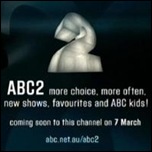 By the middle of the decade it was realised that the government’s initial planned cut off date for analogue television – 2008 – was fast approaching and the viewing public was far from being ready. The date for the analogue shutdown was postponed and incentives were put in place to encourage viewers to make the transition to digital TV. Some of the rigid genre restrictions on multi-channels, such as ABC2 launched in 2005, were being lifted and areas like Tasmania, Mildura and Darwin, all lacking a third commercial channel, were being allowed a digital-only commercial channel operated by the existing local commercial broadcasters.
By the middle of the decade it was realised that the government’s initial planned cut off date for analogue television – 2008 – was fast approaching and the viewing public was far from being ready. The date for the analogue shutdown was postponed and incentives were put in place to encourage viewers to make the transition to digital TV. Some of the rigid genre restrictions on multi-channels, such as ABC2 launched in 2005, were being lifted and areas like Tasmania, Mildura and Darwin, all lacking a third commercial channel, were being allowed a digital-only commercial channel operated by the existing local commercial broadcasters.
By 2007, networks were allowed to start offering exclusive high-definition content, not in simulcast with the analogue or standard-definition signals, which led to Seven, Nine and Ten launching HD-specific channels which offered limited amounts of exclusive programming, though this was mostly restricted to off-peak daytime or late-night timeslots so that major prime-time programming was still able to viewed in high definition.
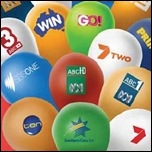 Late in 2008, the free-to-air broadcasters collaborated to launch a joint initiative, Freeview, to promote digital television to the wider audience on behalf of all networks – emphasising the multi-channel platform and subscription-free nature of free-to-air digital television as an alternative to pay-TV, and later the promotion of Freeview-branded equipment such as PVRs, though this specifically-branded equipment is not mandatory for receiving or viewing digital television but would be needed to have access to the Freeview electronic program guide (EPG) which is now in operation.
Late in 2008, the free-to-air broadcasters collaborated to launch a joint initiative, Freeview, to promote digital television to the wider audience on behalf of all networks – emphasising the multi-channel platform and subscription-free nature of free-to-air digital television as an alternative to pay-TV, and later the promotion of Freeview-branded equipment such as PVRs, though this specifically-branded equipment is not mandatory for receiving or viewing digital television but would be needed to have access to the Freeview electronic program guide (EPG) which is now in operation.
In 2009 the commercial networks were permitted to launch a second standard-definition channel. Network Ten took the first, and most radical, step and re-launched its Ten HD channel into a 24/7 sports channel, One HD, which was simulcast as its second standard-definition channel. Ten figured that sport was the most desired programming genre for high-definition and would be the genre least affected by internet downloads, and offering a sports format would act as a deterrent for viewers adopting pay-TV. The downside is that Ten’s main channel was now denied any high-definition programming.
 The Nine Network followed later in 2009 with a youth-focused standard-definition channel, GO!, which also included a catalogue of classic titles from the 1960s and 1970s. Seven’s first digital-only channel, 7TWO, presented largely an extension of the Seven brand with a mix of general entertainment programming with some exclusive titles. In more recent times 7TWO has focused more firmly on British programming such as soap operas, lifestyle programming and classic comedy and drama.
The Nine Network followed later in 2009 with a youth-focused standard-definition channel, GO!, which also included a catalogue of classic titles from the 1960s and 1970s. Seven’s first digital-only channel, 7TWO, presented largely an extension of the Seven brand with a mix of general entertainment programming with some exclusive titles. In more recent times 7TWO has focused more firmly on British programming such as soap operas, lifestyle programming and classic comedy and drama.
 The Federal Government allowed ABC a budget increase to enable it to set up a children’s channel, ABC3, by the end of 2009. But, while SBS was denied its requests for more funding for its digital initiatives, the World News Channel was re-worked into SBS2 in June 2009, offering the same news bulletin format during the day but with a wider scope for programming in the evenings, including lifestyle programming, foreign-language drama series and movies.
The Federal Government allowed ABC a budget increase to enable it to set up a children’s channel, ABC3, by the end of 2009. But, while SBS was denied its requests for more funding for its digital initiatives, the World News Channel was re-worked into SBS2 in June 2009, offering the same news bulletin format during the day but with a wider scope for programming in the evenings, including lifestyle programming, foreign-language drama series and movies.
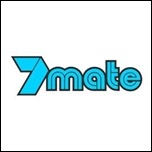 In 2010, ABC sacrificed its high-definition channel to launch its 24/7 news channel, ABC News 24, as a free-to-air competitor to pay-TV channels like Sky News. Seven and Nine also followed suit by ceasing the simulcast their main channel in high-definition and instead offering a full-scale third unique channel, even though their high-definition channels, 7mate and GEM, would feature a lot of vintage and standard-definition programming not designed or intended for high-definition viewing. For viewers that had hoped to see their favourite prime-time programs or signature events like sporting telecasts in high-definition, it is a disappointment – although this scenario may only be an interim phase to allow more channels across their limited broadcast allotment until the complete shutdown of analogue television which may then allow the networks the opportunity to re-assess and potentially extend their digital channel offerings.
In 2010, ABC sacrificed its high-definition channel to launch its 24/7 news channel, ABC News 24, as a free-to-air competitor to pay-TV channels like Sky News. Seven and Nine also followed suit by ceasing the simulcast their main channel in high-definition and instead offering a full-scale third unique channel, even though their high-definition channels, 7mate and GEM, would feature a lot of vintage and standard-definition programming not designed or intended for high-definition viewing. For viewers that had hoped to see their favourite prime-time programs or signature events like sporting telecasts in high-definition, it is a disappointment – although this scenario may only be an interim phase to allow more channels across their limited broadcast allotment until the complete shutdown of analogue television which may then allow the networks the opportunity to re-assess and potentially extend their digital channel offerings.
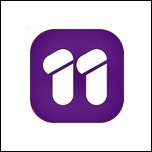 Network Ten announced in August last year that it would replace its standard-definition simulcast of One HD with an entertainment-focused channel, Eleven, to launch early in 2011.
Network Ten announced in August last year that it would replace its standard-definition simulcast of One HD with an entertainment-focused channel, Eleven, to launch early in 2011.
With all this activity by the national and commercial broadcasters, the community TV sector was all but left out of the equation entirely. Federal governments, both past and present, had denied the community TV sector access to the digital platform even though it had given various handouts and concessions to the national and commercial broadcasters – such as free broadcasting spectrum, infrastructure rebates and the commercial networks gaining a $250 million license rebate from the Federal Government. It wasn’t until late 2009 that temporary broadcast capacity was granted to the community TV sector and relevant channels in Sydney, Melbourne, Brisbane, Adelaide and Perth are now broadcasting in digital.
 Since early 2009 the Federal Government has commissioned a quarterly survey, Digital Tracker, to monitor the conversion rate of households to digital television. The first Digital Tracker survey, covering the period January to March 2009, reported that 47 per cent of households Australia-wide had converted at least one television set to digital. The most recent survey, covering the period June to September 2010, found that 75 per cent of households had made the switch to digital.
Since early 2009 the Federal Government has commissioned a quarterly survey, Digital Tracker, to monitor the conversion rate of households to digital television. The first Digital Tracker survey, covering the period January to March 2009, reported that 47 per cent of households Australia-wide had converted at least one television set to digital. The most recent survey, covering the period June to September 2010, found that 75 per cent of households had made the switch to digital.
It has not been until 2010 that the first analogue shutdowns were implemented. Mildura/Sunraysia was the first area to make the change from analogue transmission in June 2010, with regional South Australia following last month. Regional Victoria and Queensland will follow during 2011, with all remaining areas scheduled to convert from analogue television by 31 December 2013.
Source: The Sunday Age, 24 December 2000. Sun Herald, 10 December 2000. Sydney Morning Herald, 1 January 2001.
